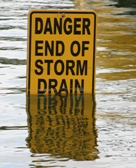Disaster recovery
The recent floods in Queensland and Victoria have emphasised the need for all businesses and families to have a plan for dealing with disasters and recovering from them. 
BUSINESS DISASTER RECOVERY PLAN
Research has shown that only about half of small businesses have any form of disaster recovery plan. There are some business advisers who specialise in this area, and you can find disaster recovery plan templates on the internet to assist you in setting up your own.
Most disaster recovery plans include consideration of the following issues:
- It is important to have a written plan that is part of the culture of the business. Everyone in the business should be involved in the development and regular review of the plan.
- Computer backup to an off-site location is vital. Many businesses do regular backups but the backup file is frequently kept in the same physical location as the main data. This is not adequate protection. There are a number of automated, internet-based backup services available at low prices. By using one of these, all your computer files can be readily available if disaster strikes.
- As part of your backup it makes sense to have a Document Management Solution (DMS) in place. Instead of maintaining paper files on-site, all business documents should be scanned and kept in computer files. Important original documents such as mortgage paperwork, trust deeds, corporate registers, and signed agreements should be kept securely off-site, with scanned copies in your DMS.
- Business interruption insurance is an important part of the plan. This cover will pay the cost of setting up new premises and for re-establishing computer records.
FAMILY DISASTER RECOVERY PLAN
Having a disaster recovery plan in place for your family makes good sense, too, and the process is similar to that of developing a plan for a business.
Key issues to discuss with your family:
- What are the most important things to be rescued? Most often the order of priority is family, pets and photos. Do not include bulky, replaceable items such as furniture. How you would get out of the property if the usual ways are blocked?
- Does everyone know the evacuation plan and what their role is? For example, who is responsible for which pet, who is responsible for the evacuation kit, and where you will all meet if disaster strikes – perhaps this will be an evacuation centre run by the local council.
These activities can also help your family to plan for, and recover from, a disaster:
- Backup your photos and music to an internet-based service – these are inexpensive and, once set up, are kept up to date automatically.
- Scan important documents such as wills and insurance policies and include them in your automated backups.
- Set up a list of important contacts and passwords, and include them in your computer backups.
- Load a USB drive with the contact and password list (put an easily remembered password on the file too) and keep it with you at all times.
- Create an evacuation box and keep it in a specified, easily accessible location known to everyone in the family. It should not be moved from this location except for a regular review and refreshing of its contents. Suggested contents are copies of insurance policies in sealed plastic bags, laminated copies of prescriptions for regular medication, a laminated copy of important phone numbers (but not your passwords!), a wind-up torch (readily available from the supermarket), a small radio and a supply of batteries, and a basic first aid kit.
The above suggestions could help you to recover quickly if fire, flood or other disaster strikes. The most important thing is to implement a plan when you have time to analyse the priorities, not wait until the rain starts falling before you start thinking about what to do.


